Insight: Future of Digital - Will digital reign in the printing arena?
The PrintWeek India team picks the brains of 14 manufacturers and dealers of digital print equipment on current trends, technology improvement and costing in the digital print market.
05 Apr 2011 | By Staff Writer

A Appadurai
HP India
"At HP, we fund research-based companies like InfoTrends for projection in growth or follow reports like PIRA. We believe that for India the growth of digital printing should touch the 15.9% mark, if not more. We are currently at an install base of 80 Indigo presses.
The analogue method of printing may still lead the way, assuming sheer volume. However, it is the total value of print that we are keenly watching and if PIRA projections come true, the analogue and digital will be of same value.
Customisation or personalisation will soon become a reality. The challenge in India is the availability of organised data. Indigo customers are today changing themselves from being a print service provider to marketing service providers, including managing various databases of customers.
Even in the overprinting business, HP is an absolute market leader. Pharma industry is one of the biggest users of overprinting. The options when it comes to overprinting is very limited, and it has longer turnarounds. But as long as it is economical, it will continue to innovate.
Inkjet for sure will take the transactional market by storm. HP’s inkjet presses have crossed an installed base of 25 presses worldwide within a year. These presses produce billions of pages every month, and we see it coming to India soon.
HP believes in having open architecture of the workflow solutions with connectivity leading to the workflow of our customers, like we integrate with Heidelberg’s Prinect.
Our click charges, at first glance may be the highest at Re 1 per colour plus the monthly service cost, but there is a difference.
Most of the digital presses use toners, and we use digital ink. Like the offset ink, one can mix and use the inks to achieve the desired colours. So when our printer does a specialised job, for example, the HP blue, he actually uses only three colours and is charged for only those. Besides, there is a guarantee of the colour at any time."

Anuj Mehta
Paper Ideas
"Let’s understand where exactly is the Indian colour digital print market moving. The primary applications which are driving the digital print volumes in India is print-on- demand (POD) or short-run printing and the most promising vertical in the digital space is photo printing.
Variable data printing (VDP) is one of the most hyped application but is still struggling to create its share in the total print volume. I am talking about colour digital printing and not the monochrome in VDP.
POD is growing under two verticals – books and marketing collaterals. At Paper Ideas, we supply photo finishing workflow software and photo finishing equipment and three out of 10 commercial printers in India are keen to migrate towards such growing opportunities.
Majority of our customers in photo vertical have actually transitioned from a non-photo segment.
Digital printing is indeed the future but will never replace offset printing. Both these technologies offer solutions for different needs. Digital will take a good share of the wallet from offset printing but when it comes to page volumes, offset will still lead digital.
Having said that digital printing is indeed the future, it has actually lost its glory for making money or profits. The growth is driven on sheet selling rather than solution or product selling.
If digital print business has to become a money spinner or profitable, printers will have to offer 360 degree solutions – offering customer print and finishing solutions.
Post-press becomes an important aspect which can position a digital print company into niche selling. Today, digital printing is no more a science."

Avijit Mukherjee
Ricoh India
"The volume of digital printing is growing and so is the utilisation of machine. Within the digital printing, the colour volume is growing by 30% and monochrome volume by 11% year-on-year.
From our estimate the Indian digital print companies have invested over Rs 100-crore during 2010, which given the utilisation of machine is not in accordance with the requirement.
Analogue printing still holds the sway and for digital printing to keep its growth momentum going, digital print providers will need to add value to their printed products. Customisation is still at a nascent stage.
At present, it is only at 1% in India. Customisation has potential and can come through transpromo (in true sense), print on demand (publishing and media) and portfolio management among others.
Transactional printing is a first step towards personalisation, which was started almost 15 years ago in India. Personalisation has not taken off mostly because of lack of technology or price sensitiveness of the Indian market.
Inkjet with its growing capabilities and laser with its decreasing prices will boost transpromo or print on demand market opportunities. Digital printing entails integration of a workflow system.
In the current scenario, digital print hardware is independent of software platforms but OEM solution providers have an important role to play in that of designing solutions for the customers.
In terms of technology, one can see new innovations in offset happening. Toner has its own niche application segment and will co-exist in the market along with continuous feed laser or continuous feed inkjet technology.
Digital print is a technology that has also seen banks and other private funding agencies take it seriously but with a bit of caution.
Click charge for a digital print job is a company policy and differs from a model to model. It’s a mode of keeping oneself competitive in the market."

Jayant Pardiwala
Nippon Color
"Digital overtaking analogue is not a concern. The concern is more with respect to the cost and run lengths. It is clear that the print run lengths are coming down significantly, and that’s were offset is largely hit.
Xerox and Kodak had major installations in the last year. This included the iGen4, Nuveras as well as Digimasters. With a plethora of companies coming in (Canon, Konica Minolta, Riso, Ricoh), the digital investment in terms of units installed seems to be the highest in the last year than any of the years before.
In India we are low on expertise as far as elaborate use of customisation is concerned. There is lack of awareness amongst many marketers about the benefits of customisation and those who are aware use it prudently increasing their returns on investment.
Continuous inkjet is supposed to be the next big thing in the market as it is expected to reduce the cost per page dramatically even in colour. Major volumes will be controlled by a very few players.
There has been a lot of integration done by all independent software companies as well as digital manufacturers. Toner technology has come of age. An output of any high-end cutsheet digital printer can be as good as an offset press, which was not the case a few years back.
The only concern that printers have as of now is about the running cost per page. Having said so, it is not just the costs that the printers consider; it is also the productivity in turning around a short-run job that needs to be assessed.
I believe that with the low penetration levels of electrophotographic presses in India as well as the value they bring at the effective costs, toner technology is here to stay."

Kartik Iyer
Proteck Machinery
"There may be a growth 20% to 25% in the digital segment. As the technology matures, quality is improving, costs are coming down. This should stimulate significant growth.
The general commercial, book and short-run printing may go digital. However, a large portion of the total printed volumes are contributed by book and packaging printing. Based on the size of these markets in India, I believe that analogue printing is still here to stay at least for the next decade, if not more.
Customisation is sometimes over-estimated in the digital printing context as a normal digital printer may see a very small percentage of his work calling for variable data. Overprinting on offset may still be the most cost-effective way of printing very large print runs with limited variable data, especially single-colour variable data.
It comes with the restriction on quality and the ability to customise. However, new technologies in inkjet technology will soon have products at a more cost-effective price, today the entry barrier for four-colour transactional printing is high and is probably the key challenge of transactional printing."

Nilesh Shah
KMI
"Yes, it’s true that digital printing is growing. Reason: speed of delivery. The print buyers want a product just in time. However, digital is still the second option and caters mainly to the short-run demands.
But in certain segments like the photo album, the focus is now on getting it done through a digital printer instead of the traditional photo labs.
Variable data printing (VDP) has become a mission critical application and has a big market, which is distributed between the digital printers and offset printers using online printing options. Critics are talking about inkjet technology enhancement for production machines, but one will have to wait and see the outcome of acceptance and cost of such technology.
Integration of workflow systems is an important factor, one with which the customer can offer more solutions and capture more markets.
Konica Minolta offers a total solution including VDP, colour management solution to its customers through its different partners. Konica Minolta has pioneered the Simitri polymerised HD toner which gives very good print quality.
At KMI, we offer all options to our customers, outright, finance or lease. Finances are available through our tie-up with one of the finance companies. Our existing click charge is Rs 4.50 per sheet."

P Natarajan
Aura Print Solutions
"The Indian printing industry as whole is growing at a rate of 10-12% while digital printing itself is growing at a rate of 25%. Photo segment which is at its infancy just happens to double by the sheer number in the last three years.
If we consider fast copiers and high-end digital solutions like that of MGI, the installations should exceed 300 in the last year. For high end digital with a price tag of Rs 1.3-crore plus, the figure should be around 20 presses.
Commercial printing will adopt digital solutions as cost of consumables will come down. Plus it won’t be feasible to have huge presses in the city.
Customisation today is a reality. Almost 90% of the print produced on MGI machines is personalised data. It ranges from IT PAN card printing, photobook to personalised calendar printing.
Today most of the MGI customers print on an average 10,000 plastic card and around 50 other personalised paper print jobs every day.
We offer a la carte system by which the customer does not pay a fixed click charge, instead he pays only for what the job has consumed. This means if the printer prints the background or static data using offset and then the colour variable data by MGI press, then he is paying almost 50% to 60% less than the average click charge.
MGI has an open ended system which can easily accommodate the customer’s existing workflow. Our products also support most of the colour management and photobook designing software.
In my opinion, the inkjet technology has not yet matured enough to be compared with the toner print. It still needs a base primer coat and can print on a very limited stock. In fact, MGI would be launching a new fast and high quality product in the Meteor series."

Pankaj Kalra
Xerox India
"Xerox’s projections of digital printing growth are in line with the worldwide trends. And our customers in India are actually growing at a pace almost double to the worldwide trends. The best parameter for measuring growth in digital printing is the quantum of growth of the digital print volume.
The digital print volume for our customers is growing by almost 30% year-over-year.
Customisation is the key to any campaign’s success. Marketers today thrive on the concept of – one to one marketing.
Research shows that such initiatives have always led to a substantial increase in response rates and overall return on investments. However, any customisation initiative always follows an excellent database management.
In India, data management is not as matured as bigger printing markets like America and Europe.
Xerox is a multi-technology company that offers toner, LED, solid ink, waterless inkjet based printing solutions to suit the varied application requirements of our customers. Toner technology is one of the keys and very much here to stay.
A lot of R&D investments are going on in toner based colour digital presses. Almost 95% of the total digital presses sold in India require a third party finance. We have been successful in being able to show and prove to the financial institutions the economic viability of such investments, and good and timely return on the investment.
Xerox offer end to end automated services encompassing pre-printing, printing and post-printing. The post-printing can be inline or offline integrated depending on the print shop’s productivity requirement and application.
Xerox introduced the concept of Full Service and Maintenance (FSMA), dubbed as a click charge. This concept does away with the concept of an AMC and instead gives our customer the freedom and peace of mind due to the flexibility of paying as per usage only without any base charges."

Parag Shah
Hi-Tech Systems
"It has taken a considerable amount of time for printers to understand the importance of digital printing. Currently, the industry has outgrown the concept selling.
Digital printing seems to have crossed the hurdle and entered into the growth space where instead of asking "why should I buy digital?" customers are now asking "what more can I do with digital…"
Though it is difficult to predict the growth in percentage, one can easily project the page volume to be higher than 15% in India.
Currently, customisation is offered for statutory requirements and a small percentage for non-statutory requirements. However, for digital printers customisation is an added advantage and give them better return on investment.
Post-press in digital is in a nascent stage. Many printers are yet to come to terms that digital post-press is different than the conventional one and needs separate investments. Once realisation dawns, the demand for digital post-press is bound to grow."

Puneet Datta
Canon India
"On one hand analogue printing is required to communicate with the masses and on the other digital printing is required for targeting communication to the relevant segment and thus creating a value proposition.
In terms of sales volume, 480 units were sold (light, medium, high both mono and colour) amounting to around Rs 150-crore. Though this may be around 12%-13% of offset units, digital printing in India is expected to grow at approximately 25% year- on-year.
The dawn of digital inkjet continuous feed technology is a step towards catching up with analogue printing in terms of print volume. Personalisation is gaining importance in India, although it is still restricted and is carried out by large, specialised printers, who have both the skilled manpower and the requisite solutions installed.
At present, many firms are doing personalised print through overprinting of offset printed direct mail using inkjet printheads, because its cost effective and makes them competitive. This will change with the advent of new inkjet technologies, which offer low running cost and also with transpromo gaining momentum.
Continuous feed inkjet is the future and will take the major share of pre-printed stationery. Toner technology will co-exist alongside other technologies as they evolve.
Finance is an issue with new entrepreneurs. We had also realised that with the economic slowdown in 2009, we needed to finance some of the customer orders. We, therefore, infused Rs 100-crore last year into our capital.
Thus Canon is geared up on the finance support aspect and validates the credit worthiness of invidual customers.
For our cut-sheet digital presses, we enter into an agreement of per print cost termed as Total Guarantee. Under this agreement Canon will take a particular cost per impression and in-turn the entire responsibility of consumables, spares and maintenance of the machine is completely covered."

Ramani Viswanathan
Kodak India
"Digital printing is growing at a much higher pace in India then what is reflected in the study from PRIMIR, which projects the page volume at 15.9%. With the estimated trend, we expect the industry sales of between 50 to 60 digital production printing presses in 2011 in India.
Printers are realising the value and benefits of printing short-run jobs on digital presses. We expect around 100 entry level, 50 mid-level and 10 heavy production digital presses to be installed in India.
Having said that, digital printing will always complement analogue printing. Customisation is of high relevance for personalised communication in a diverse country like India. Currently, the volume is small.
Personalisation is a way of communicating. It, being offered by digital printers to their end customers as invites, newsletters, marketing collateral, barcodes and QR codes.
Kodak workflow applications like Unified workflow solutions make embedding new application like variable personalisation and transpromo documents seamless. Kodak’s Prinergy digital workflow can drive all industry standard devices, irrespective of the output device. Kodak workflow solutions operate in a hybrid environment, with both digital and convention technologies.
Kodak supports its potential customers seeking finance by linking them up with finance partners such as lending institutions and banks, thereby enabling convenient financing options and flexible payment terms for them.
Kodak’s click charge depends on the printing volume. It starts from a fixed amount of Rs 4.50 per sheet/side. This includes all consumables and spare parts."

Ranesh Bajaj
Creed Engineering
"As per the CAGR, digital printing is growing at 9%. According to a KPMG report, it is expected to touch Rs 26,900-crore by 2014. In India the figure is expected to be USD 2.3billion in 2012, a growth of 24.8% as per the CAGR.
The estimated industrial digital printing equipment sales in terms of value have been around USD 20-million.
Customisation is yet to take off. Currently direct mail in India is a bit immature as advertising companies and brand owners are yet to understand and evaluate its advantages.
Hybrid printing is by far the economical and fastest way of doing transaction document.
This is amply demonstrated by more than five sites in India doing approximately 40% of transactional monochrome volume using hybrid technology. But continuous inkjet presses will boost the transaction printing market.
It will reduce cost and turnaround time and also offer fully variable colour.
Buying workflow systems for digital presses are the buyers’ prerogative. But third-party systems depend on two factors: data stream that is created from customer’s side and the protocol that printing machines accept. A third-party solution has to bridge these two workflow points while bringing intelligence and marketing logic.
Normally, software like PrintSoft, GMC, EMTEX, Doc One provide variable personalisation and creation of intelligence transpromo documents. For post-press, we normally offer equipment from Hunkeler and Matti Orion.
Creed does not promote click charge model because we at Creed feel that this model does not offer the advantages of efficiency to the print provider. We believe that invisible cost (cost of service) if any occurs due to inefficiency in the operation of the equipment or workflow."

Rohan Vaidya
Infoprint
"The advent of new inkjet technology has shrunk the price gap between the analogue and the digital technology, and considering this, we are expecting a double digit growth for India.
The trend to communicate with relevant information (customisation) is picking up, but is still at a nascent stage. Quality of data is a major hurdle coupled with the knowhow to analyse it to derive at a meaningful segmentation. In India, direct marketing is almost non-existent.
Continuous inkjet has made variable colour printing an affordable one for the print buyers, which is expected to move more and more transactional volumes.
Infoprint’s workflow is a vendor neutral, closed-loop system beginning at document inception and ends at the customer response making centralised real-time job tracking and control easy. It also manages single or multiple sites from the same system.
There are some special applications like MICR and also smaller volume based solution, which will need toner technology. Expect improvements of toner in terms of quality, cost and printability on various substrates.
IBM Global Finance has an exclusive arrangement with InfoPrint to provide customers with required capital finance. All InfoPrint installations are project based."
T P Jain
Monotech Systems
"The digital printing, in our estimation, will grow at 20% plus year-on-year during next five years. This is evident from the growth experienced by us in the number of digital printers being sold in the market besides an increase in capacity utilisation of existing installation base.
The replacement of analogue with digital printing is a bit slow, particularly because of high cost associated with electrophotography process of digital printing, but it may accelerate with maturing of inkjet technology.
It is difficult to put a time frame for digital to overtake analogue printing, but it may be faster than expected.
The concept of transpromo is yet to evolve and mature but once that happens, it would throw tremendous opportunities for full colour variable data digital printing. Both electrophotography and inkjet technologies will find their place in transpromo market.
We do integrate our system with workflows provided by our principals, like Xeikon comes with a powerful X-800 workflow, Oce with Prisma and Konica Minolta with its own controller. However, all our engines can be integrated with third party workflows as well and that provides a lot of flexibility to end users.
The toner technology is still advancing in terms of being able to provide high quality at a consistent rate. There’s the simitry HD toner of Konica Minolta and Oce’s Premixed toners, which achieves offset like print quality and avoid any wastages.
Finance has never been a bottleneck for acquisition of digital presses by Indian print firms. Banks as well as private finance companies are more than willing to finance these equipment to willing buyers.
We offer different models of click charges depending on the equipment like full click charge, maintenance click. There is no invisible cost. For high volume customers, maintenance click works out as a cheaper option..."







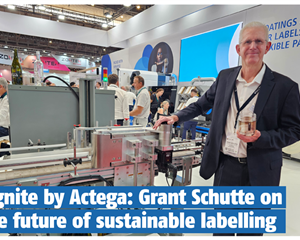
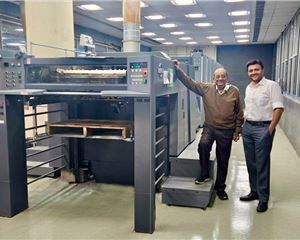
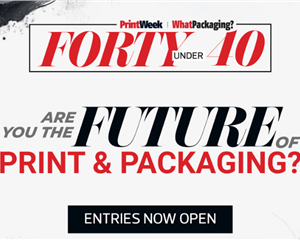
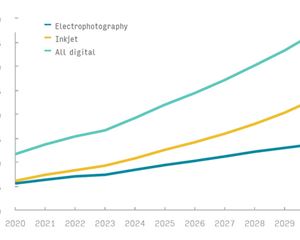
 See All
See All